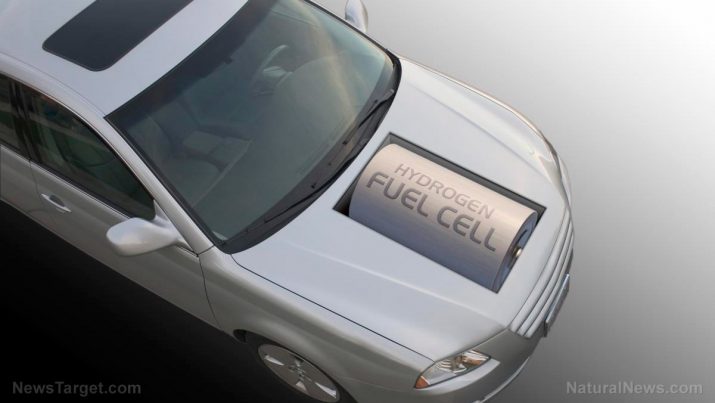
Hyundai Nexo self-driving car produces water that’s supposedly safe enough to drink
Saturday, March 03, 2018 by David Williams
http://www.realsciencenews.com/2018-03-03-hyundai-nexo-self-driving-car-produces-water-thats-supposedly-safe-enough-to-drink.html

If you’re going to go down the renewable energy route, you might as well go all the way. That seems to be the idea that Hyundai had in mind when it designed and developed its latest fuel cell electric vehicle (FCEV). Dubbed the Hyundai Nexo, it’s the company’s newest FCEV, and it comes in the form of a crossover SUV that runs entirely on electrical energy generated by on-board hydrogen fuel cells.
Compared with traditional cars that use conventional combustion engines, hydrogen cars such as the Hyundai Nexo can run entirely on electrical energy and therefore not directly emit any carbon dioxide or nitrogen oxide that could end up in the Earth’s atmosphere. Its only by-product is said to be water vapor, which is so clean that it can be collected and then used afterwards in order to water plants or even drink a cup of tea or coffee.
According to Dr. Woong-chul Yang, vice chairman of the Hyundai Motor Company, the use of hydrogen energy with the Nexo is the next step in developing better technology for a sustainable planet. “Hydrogen energy is the key to building a more sustainable society,” he said. “Yet as another result of this earth-saving effort today, I am so proud to introduce to you our second-generation full cell electric vehicle which is a culmination of our cutting-edge technologies.”
The Nexo is Hyundai’s second fuel cell electric car, with the Tucson fuel cell coming to market first and well ahead of it. Compared to its predecessor, the Nexo can last up to an estimated driving range of 370 miles, an improvement of more than 100 miles. Hyundai has also added certain acceleration and power enhancements along with a number of distinct new features. Its ability to turn residual water vapor into actual water that’s good enough to drink is just a neat little trick; it’s quite the capable little car, all things considered.
The Hyundai Nexo’s highlight features include a couple of driver assist technologies: Lane Following Assist (LFA) and Highway Driving Assist (HDA). The former is designed to automatically adjust steering and help keep the Nexo in the center of whichever lane it’s on when being driven, while the latter uses on-board sensors and map data to keep operations steady and automatically adjust speed in limited environments, so long distance drives can be accomplished with greater ease and improved safety, according to Hyundai.
The Nexo also comes with what Hyundai calls a Blind-spot View Monitor, which is said to be an industry-first. It’s a system of cameras that shows drivers the rear and side views of the car on a center cluster screen, which could prove useful when changing lanes in either directions. Related to this is the Nexo’s Remote Smart Parking Assist (RSPA), which can be used to either autonomously park or un-park a Nexo with a simple push of a button, with or without a driver in the car.
In terms of engine specs, the Hyundai Nexo comes with a 120-kilowatt motor capable of delivering 291 foot pounds of torque. It can go from zero to 60 miles per hour in 9.5 seconds, and runs on a 135-kilowatt battery. Certainly, it isn’t the absolute best FCEV that will ever exist, but it’s a step in the right direction.
Read more articles on electric vehicles in Power.news.
Sources include:
Tagged Under: Tags: electric vehicles, fuel cells, future tech, goodclimate, goodpollution, goodscience, green living, hydrogen, Hyundai, Hyundai Nexo, inventions, Nexo, power





